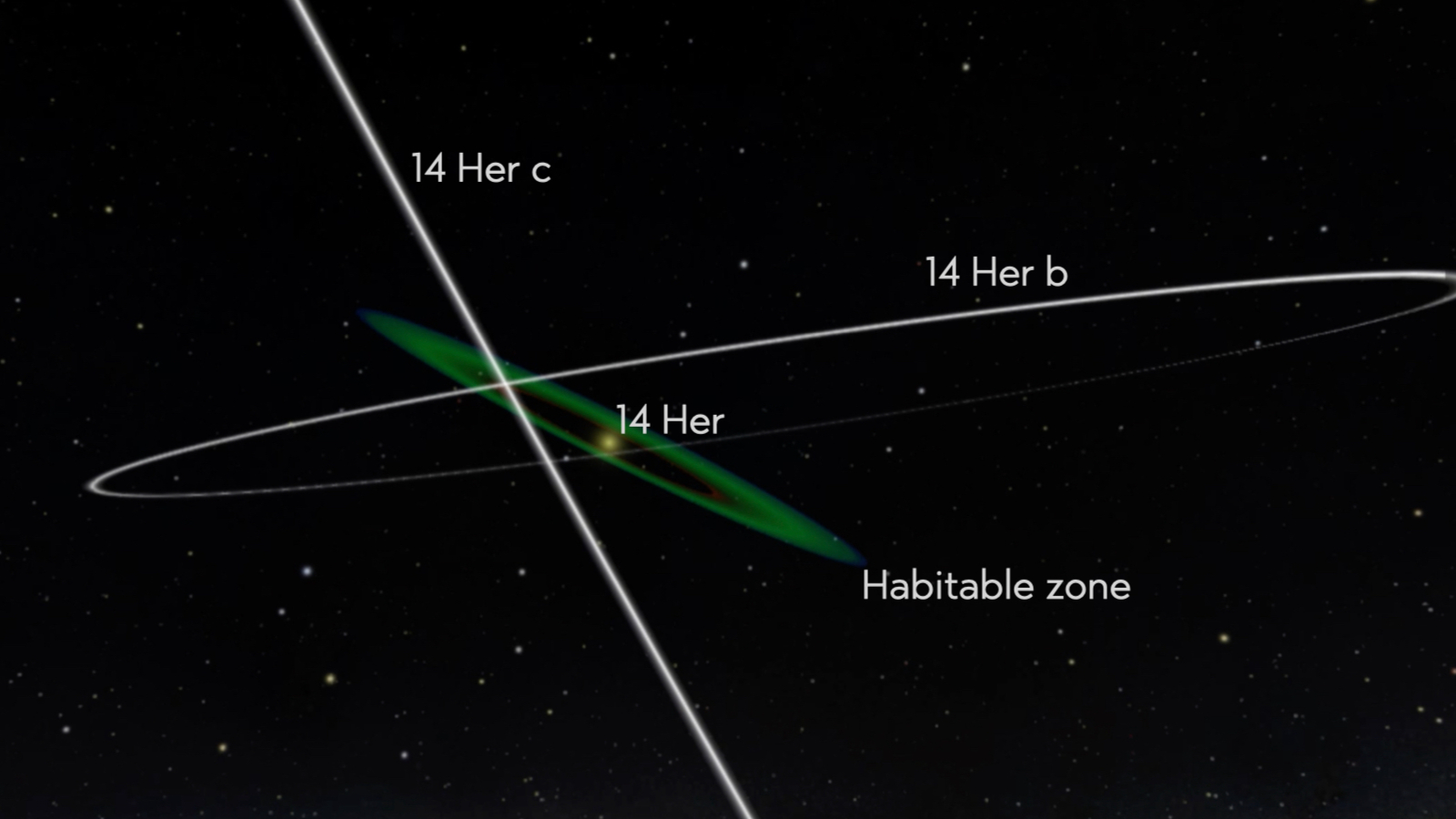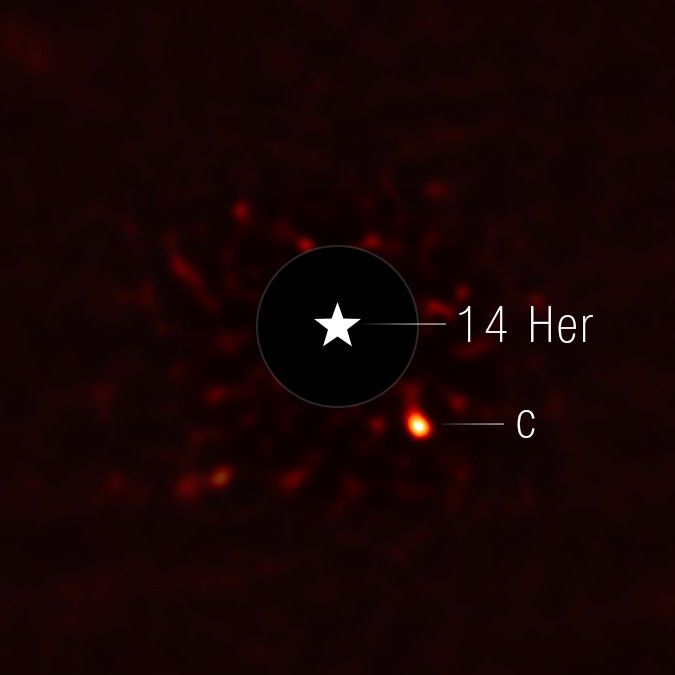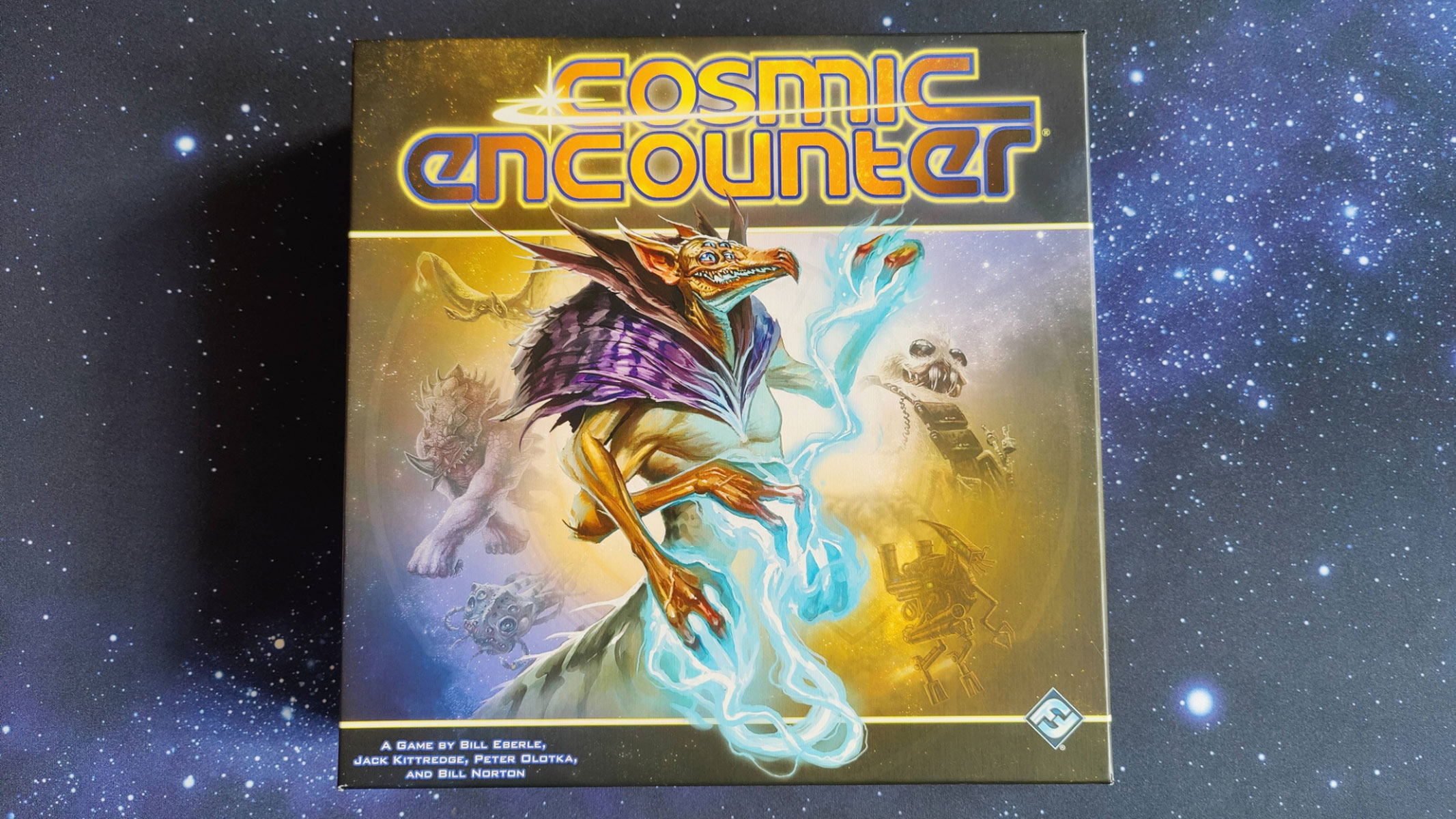JWST spies frigid alien world on bizarre orbit: 'One of the coldest, oldest and faintest planets that we've imaged to date'
"14 Her c is one of the coldest, oldest and faintest planets that we've imaged to date."

The James Webb Space Telescope (JWST) has notched another milestone, capturing a direct image of a distant, frigid planet in a solar system unlike our own, astronomers announced on Tuesday (June 10).
The exoplanet — named 14 Herculis c, or 14 Her c for short — orbits a sunlike star about 60 light-years from Earth in the constellation Hercules. In the new JWST image, it appears as a faint, fuzzy orange dot, its color a result of heat radiating from its atmosphere translated into visible hues.
Astronomers estimate that 14 Her c formed around 4 billion years ago and has a frigid atmospheric temperature of just 26 degrees Fahrenheit (minus 3 degrees Celsius).
14 Her c orbits its star at a distance of about 1.4 billion miles (2.2 billion kilometers), or roughly 15 times farther from its star than Earth is from the sun. If placed in our solar system, it would sit between Saturn and Uranus.

But, unlike the flat, well-ordered orbits of planets in our solar system, the 14 Herculis system is dramatically misaligned. Its two known planets, including 14 Her c, orbit at angles of about 40 degrees to each other, creating an "X"-like crossing pattern around their star.
This unusual layout may have been caused by the early ejection of a third massive planet from the system, throwing the remaining two into a gravitationally turbulent "planetary tug of war," Balmer said.
"These wobbles appear to be stable over long time scales," he said. "We're trying to understand what kinds of planet-planet scatterings could produce such an exotic configuration of orbits."
Get the Space.com Newsletter
Breaking space news, the latest updates on rocket launches, skywatching events and more!
This instability turned out to be a scientific advantage for Balmer's team. Of the nearly 6,000 known exoplanets, only a small fraction have been directly imaged.
"Doing this is very technically challenging," said Balmer. Planets shine thousands — and, in some cases, even millions or billions — of times fainter than the stars they orbit, so they "are like fireflies next to lighthouses," he said.
Most directly imaged exoplanets are hot, young gas giants that emit enough infrared light to stand out from the intense glare of their host stars. In contrast, colder and older planets like 14 Her c are usually far too dim to detect.
The planet's tilted, off-kilter orbit, however, "is great news for direct imaging," Balmer said. "We could confidently predict that JWST could resolve the outermost planet in the system."
Using the telescope's specialized starlight-blocking device known as a coronagraph, Balmer and his team succeeded in isolating the planet's faint infrared glow.
"We are now able to add to the catalog older exoplanets that are far colder than we've directly seen before Webb," Balmer said in a statement.
Based on 14 Her c's estimated age of around 4 billion years, its mass of about seven times that of Jupiter, and computer models of how planets evolve, the researchers expected the planet to appear brighter — or emit more heat — than it actually does in the JWST image.
"The planet's actually significantly fainter than what we'd expect," said Balmer. "We don't think that this is a problem with the evolutionary models, however."
Probing the world's atmosphere, JWST detected carbon dioxide and carbon monoxide at temperatures where methane would typically be expected, which suggests that strong updrafts carry hot gases from deep within the atmosphere to colder upper layers, Balmer said. These gases, possibly along with thin icy clouds, reduce the heat escaping into space, making the planet appear cooler and fainter than expected.
With 14 Her c, astronomers have broadened the range of exoplanets they can study. By examining planets with diverse masses, temperatures and orbital histories, scientists hope to gain a deeper understanding of how planetary systems, including our own, form and evolve.
"We want to understand how these planets change, because we want to understand how we got here," said Balmer.
Join our Space Forums to keep talking space on the latest missions, night sky and more! And if you have a news tip, correction or comment, let us know at: community@space.com.

Sharmila Kuthunur is a Seattle-based science journalist focusing on astronomy and space exploration. Her work has also appeared in Scientific American, Astronomy and Live Science, among other publications. She has earned a master's degree in journalism from Northeastern University in Boston. Follow her on BlueSky @skuthunur.bsky.social
You must confirm your public display name before commenting
Please logout and then login again, you will then be prompted to enter your display name.
